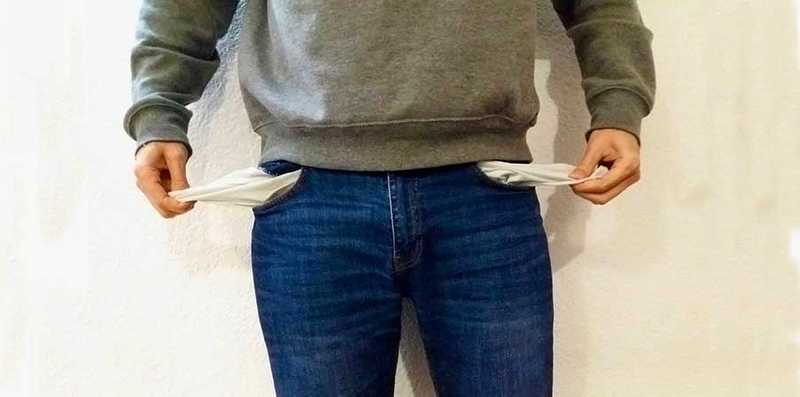1. Basic concepts
Section 240 of POCA explains that civil recovery proceedings enable enforcement authorities to recover, in civil proceedings before the High Court or Court of Session in Scotland, property which is, or represents, property obtained through unlawful conduct.
The relevant legislation is found in Part 5 of POCA, regularly amended since its initial implementation.
There are three key concepts: (i) unlawful conduct, (ii) property which is obtained through unlawful conduct, and (iii) associated property.
(1) Unlawful conduct
The basic definition of 'unlawful conduct' is simple. As s. 241(1) of POCA explains:
Conduct occurring in any part of the United Kingdom is unlawful conduct if it is unlawful under the criminal law of that part.
There is no requirement for there to have been a prior conviction. Indeed, civil recovery orders have been obtained against a respondent who was acquitted in a criminal court. Moreover, and importantly, the criminal conduct need only be proved to the civil standard of proof - i.e. on the balance of probabilities: see s. 241(3) of POCA.
But Part 5 is not simply concerned with domestic criminal conduct. Property which represents the proceeds of criminal conduct abroad can also be targeted, so long as a dual-criminality test is satisfied. More particularly, it must be shown that conduct which occurs in another country or territory is (a) unlawful under the criminal law of that country/territory and (b) if it had occurred in part of the UK, it would have been unlawful under the criminal law of that part: s. 241(2) of POCA.
By way of amendment introduced by the Criminal Finances Act 2017, a further category of unlawful conduct was introduced - arising in relation to gross human rights violations. This requires a little more explaining:
- Conduct is unlawful if it occurs outside the UK and either constitutes, or is "connected with", a gross human rights abuse or violation: s. 241(2A).
- The test for gross hum rights abuse/violation has three limbs: (1) the conduct has to constitute torture, or the cruel, inhuman or degrading treatment or punishment of a person who has sought to either (i) expose illegality of a public official or (ii) obtain, exercise, defend or promote human rights and fundamental freedoms; (2) the conduct is carried out because the victim has sought to expose illegality/promote human rights; and (3) the conduct is carried out by a public official, a person acting in an official capacity, or by someone who acts at the behest of such a person. See s. 241A(1)-(4).
- Torture is widely defined: any conduct that intentionally inflicts severe pain or suffering on another person suffices (whether physical or mental, and whether inflicted by act or omission): s. 241A(6)-(7).
- Conduct is connected with the commission of gross human rights abuses or violations where a person acts as agent for another in relation to such activities, or otherwise directs, sponsors, profits or materially assists such activities: s. 241A(5) and (8).
(2) Property obtained through unlawful conduct
Again, the basic definition (provided by s. 242(1) is straightforward:
"A person obtains property through unlawful conduct (whether his own conduct or another’s) if he obtains property by or in return for the conduct."
Three further points should be made.
First, s. 242(2)(a) says "it is immaterial whether or not any money, goods or services were provided in order to put the person in question in a position to carry out the conduct."
That sounds a little cryptic, but the explanatory notes make things clear: take a stockbroker who uses his salary to buy illegal drugs which he then trades for a profit; he cannot claim that the proceeds of his dealing are not recoverable property because he used legitimate money to put himself in a position to deal drugs.
Secondly, s. 242(2)(b) says that:
"it is not necessary to show that the conduct was of a particular kind if it is shown that the property was obtained through conduct of one of a number of kinds, each of which would have been unlawful conduct."
The aim here is to help the enforcement authority who is trying to establish that property represents the proceeds of crime. If they seek to recover property belonging to a drug-dealing, brothel-keeping, money-laundering thief, they will not need to show which of these activities resulted in the acquisition of the recoverable property (so long as it can be shown that one of them must have done).
Thirdly, and generally speaking, where property obtained through unlawful conduct (the original property) is or has been recoverable, property which represents the original property is also recoverable: s. 305(1) POCA. In other words, you can trace from a stolen painting, swapped for drugs, which were then sold for cash, which cash was then deposited into a bank account.
Fourthly, property can be recoverable even if in some senses it results from a victimless crime. Take, for instance, a person who obtains a mortgage by fraudulently misleading a bank as to their income, but who nevertheless discharges the mortgage in full. The Supreme Court held in R v Waya [2012] UKSC 51 that the value of the property attributable to the fraudulently obtained mortgage was indeed recoverable.
(3) Associated property
But not all property which is connected with unlawful conduct is recoverable. Section 245 recognises the category of "associated property" which is property, not itself recoverable, that nevertheless forms part of the recoverable property.
Again, this concept is best explained by example:
- If A and B each contribute £1000 towards the purchase of a car, with A having stolen his contribution and B having earned it legitimately, then half of the car (that referable to A's contribution) will be recoverable property and the other half (referable to B's money) will be associated property).
- Similarly, if A steals a painting but then uses legitimately earned money to frame it, the painting will be recoverable property and the frame associated property.
2. Defences
There are a number of general defences to a claim under Part 5, aside from denying that property was obtained through unlawful conduct.
(1) Bona fide purchaser
The most important defence is that of bona fide purchase. This is found in s. 308(1), headed General Exceptions, which provides as follows:
"If—
(a) a person disposes of recoverable property, and
(b) the person who obtains it on the disposal does so in good faith, for value and without notice that it was recoverable property,
the property may not be followed into that person’s hands and, accordingly, it ceases to be recoverable."
This defence is similar in nature to the bona fide purchaser rule that applies when a third party has acquired trust property.
(2) Specific defences
There are a number of specific defences, which concern:
- Where a claimant is paid recoverable property in satisfaction of a judgment, provided that the claim is based on the defendant's unlawful conduct: s. 308(3).
- Where compensation or restoration payments are made under various criminal or regulatory statutes: see s. 308(4) - (9).
(3) Just and Equitable / Human Rights
Once a claim for civil recovery has been proved, the Court "must" make a recovery order: see s. 266(1). However, the Court may not make any provision in a recovery order which:
- Is not just and equitable, providing that (a) the respondent obtained the recoverable property in good faith, (b) he changed his position (eg spent money improving the property), (c) did so without notice that the property was recoverable, and (d) the recovery order would be detrimental to him. See s. 266(3)(a).
- Is incompatible with rights conferred by the European Convention on Human Rights. See s. 266(3)(b).
In relation to the ‘just and equitable’ exception, it is now established at first instance that
(a) the onus and burden of proof will fall on the respondent,
(b) this exception will only “rarely” be available, and
(c) it is (at least primarily) aimed at a “proprietary estoppel type of situation in which an individual has been promised an interest in identified … property, and in reliance on that promise acts to his or her detriment, for example by renovating it at his own expenses, or working on the land for no reward, in the legitimate expectation of receiving it … only to find out that it has been purchased with the proceeds of crime”.
See NCA v Azam [2014] EWHC 3573 (QB) (Andrews J), [68]-[76], and NCA v Atkinson [2015] EWHC 1299 (QB) (Coulson J), [49]. See, to similar effect, Kalsoom Sanam v NCA [2015] EWCA Civ 1234, at [64] (Etherton C).
3. Property Freezing Orders
A civil recovery claim will often be accompanied by a Property Freezing Order, or "PFO", which freezes the property that the enforcement authority says is recoverable whilst proceedings are ongoing.
The test for the grant of a PFO
The relevant parts of s. 245A provide that:
"(4) The court may make a property freezing order on an application if it is satisfied that the condition in subsection (5) is met and, where applicable, that the condition in subsection (6) is met.
(5)The first condition is that there is a good arguable case—(a) that the property to which the application for the order relates is or includes recoverable property, and (b) that, if any of it is not recoverable property, it is associated property.
(6)The second condition is that, if—(a) the property to which the application for the order relates includes property alleged to be associated property, and (b) the enforcement authority has not established the identity of the person who holds it, the authority has taken all reasonable steps to do so."
The second condition is unlikely to apply in most cases.
As for the first condition:
- The enforcement authority must show a good arguable case that the property to be frozen is either recoverable or associated property.
- The evidence required to make out such a case will depend on the circumstances: an easy case might concern property stolen by an employee from his employer, which remains in the same account into which it was initially transferred. But most cases are far more complex, requiring a careful analysis of the way in which recoverable property has been transferred from bank account to bank account, used to purchase chattels or real estate, and perhaps been moved between different jurisdictions.
- The expression 'good arguable case' is a legal term of art developed in the freezing injunction context. It means a case which is more than barely capable of serious argument, but not necessarily one which the judge considers would have a better than 50% chance of success: see Ninemia Maritme Corp v Trave [1984] 1 All ER 398, 404D.
Whilst in a civil freezing order context it is necessary to show a real risk of dissipation, this forms no part of the statutory test contained in s. 245A of POCA. That said, it is unlikely that there will be a situation in which the NCA establishes a good arguable case that property has been obtained by or in return for criminal conduct where there is no such risk of dissipation.
Excluding property from a PFO
It quite often happens that a respondent to a PFO says "I can't defend myself in the civil recovery proceedings without using assets that are frozen by the PFO".
The Court’s jurisdiction to vary a property freezing order is conferred by s. 245C of the 2002 Act, with exclusions to enable a respondent to meet legal expenses addressed by s. 245C(5), (6) and (8).
By sub-section (6), the Court must have regard to, in particular, the desirability of the respondent being represented in recovery proceedings. And by sub-section (8) the Court must, subject to sub-section (6), exercise its power to make exclusions
“with a view to ensuring, so far as practicable, that the satisfaction of any right of the enforcement authority to recover the property obtained through unlawful conduct is not unduly prejudiced”.
When an application is made to exclude assets from a property freezing order to enable a defendant to meet his legal expenses, the burden lies on the defendant/applicant to persuade the court that it would be just to permit the expenditure out of assets affected by the order, having regard to all the circumstances: SOCA v Azam [2013] 1 WLR 3800 (CA), [53] (Lloyd LJ).
There are three common situations that may arise on such an application:
Class 1. The Court may conclude that there are assets which are not caught by the property freezing order that are available to meet legal expenses. Though such a situation is likely to be rare, the appropriate response is for the Court to refuse the exclusion sought: Azam, supra, [54]-[56] (Lloyd LJ).
Class 2. The evidence may leave the Court with “specific grounds for suspicion that the applicant has other available assets, because of lifestyle factors, or because he has not explained what has become of assets formerly recorded as his”; in such a case, the court may well not be satisfied, overall, that the applicant has discharged the burden of showing that it would be just for him to be allowed to use assets which are subject to the property freezing order: Azam, supra, [57] (Lloyd LJ).
Director of the Serious Fraud Office v X [2005] EWCA Civ 1564 was such a case: no exclusion was granted because the evidence before the court was in a very unsatisfactory state, with several important questions unanswered as to what had happened to assets previously available to X (see Azam, supra, at [45] (Lloyd LJ)).
Class 3. The evidence does not give specific grounds for suspicion, but the enforcement authority is able to rely upon a previous instance of non-disclosure. This was what happened in Azam, where the defendant applying for a legal expenses exclusion had failed to disclose a Luxembourgian bank account (which, by the time the exclusion application was heard, had been discovered and frozen). If this is all that the enforcement authority is able to point to, and there is nothing indicating the existence of unexplained or undisclosed assets, then the previous non-disclosure is not, of itself, a sufficient reason for refusing the exclusion: Azam, supra, [66(3)] (Lloyd LJ).
To put the point another way, in a Class 3 situation the applicant does not bear the burden of proving that there are no other available assets that could be used to pay his legal expenses: ibid.





